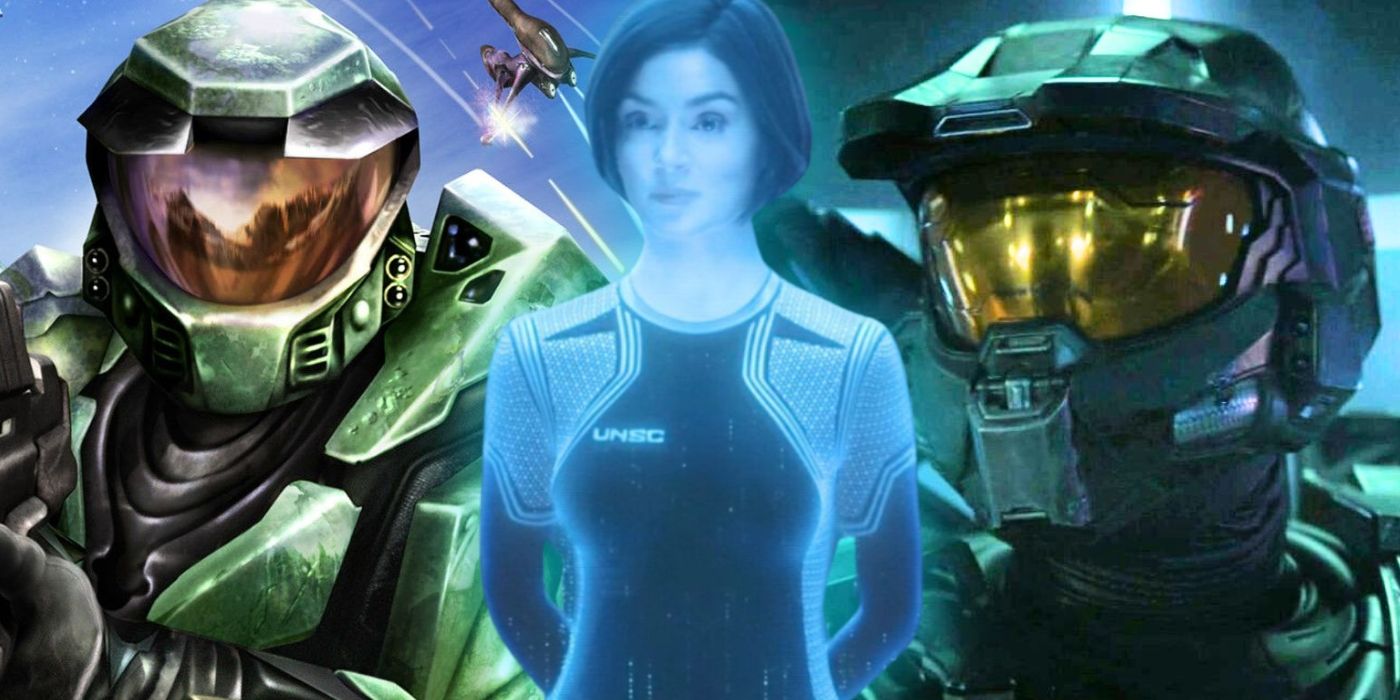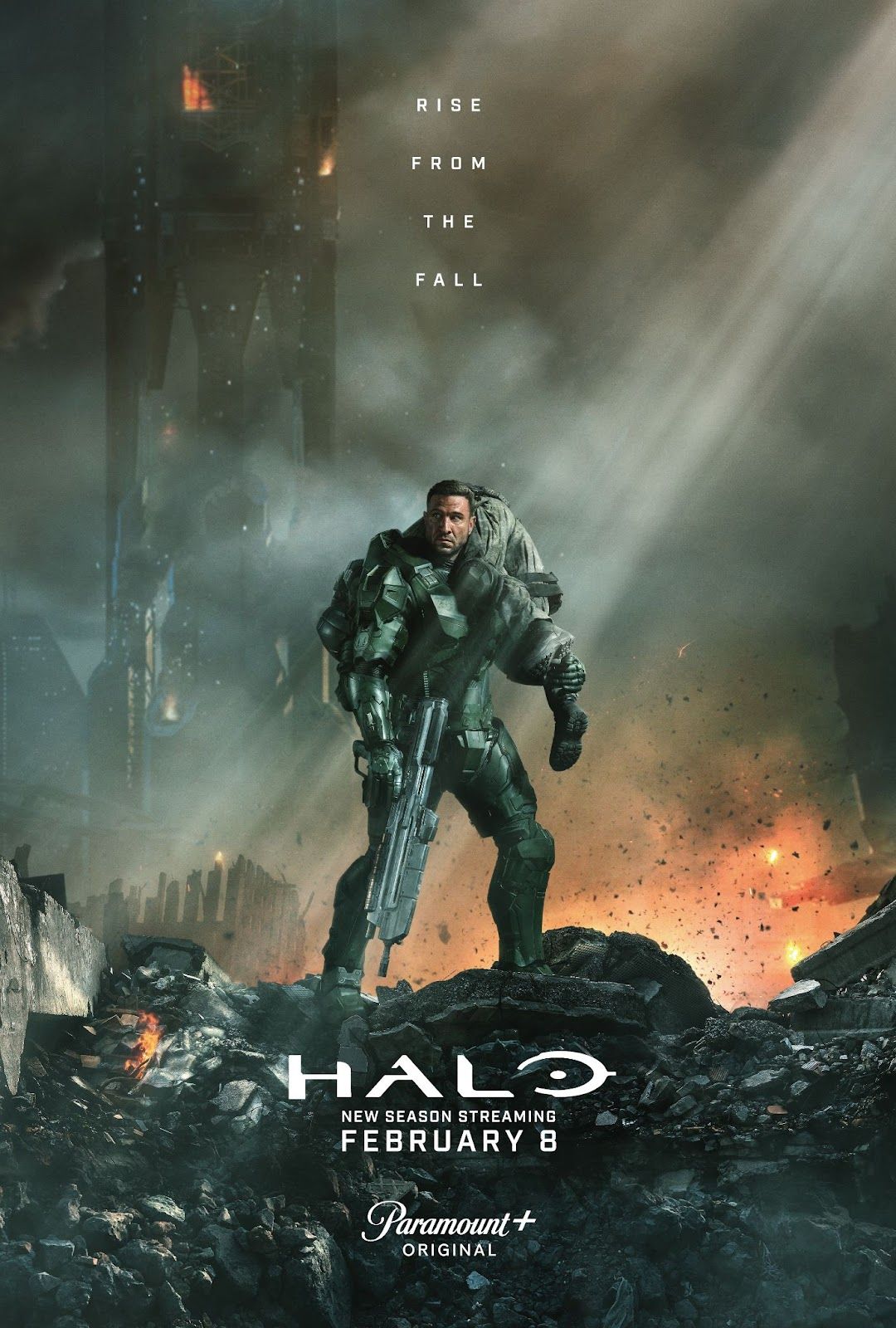Summary
- Halo’s changes to the source material caused fan backlash, leading to its cancellation on Paramount+.
- The series’ low production value hindered its ability to capture the essence of the Halo universe.
- Controversial character relationships, plot holes, and missing fan-favorite characters contributed to Halo’s downfall.
After two contentious seasons, the Halo TV show’s days on Paramount+ have drawn to a close, and not without precedent. Adapting the famous science fiction first-person shooter video game series of the same name for live action television, the streaming series drew the ire of hardcore fans due to its choices with the IP. After two seasons, Paramount+ has officially canceled Halo, the series being yet another victim of the ever-present video game curse.
There are many reasons why Halo ended up getting canned after two short seasons. The series quickly burned a lot of goodwill with fans with its extensive and bizarre changes to the story in season 1, in many cases completely misappropriating the universe of the Halo series. Season 2 wasn’t able to recoup enough positive fan sentiment, and the series wasn’t strong enough to lure in casual audiences, either. As a result, the producers of Halo look for a new platform to continue hosting the show on.
Related
6 Game Characters Halo Season 3 Must Use To Beat Season 2 After Huge TV Show Improvement
Halo season 2 made big improvements after season 1’s backlash, but Halo season 3 needs to introduce a few key game characters to continue its success.
10 Halo Changed The Source Material Too Much
There’s a difference between taking liberties and complete a story overhaul
A space opera that spans centuries, the story of the original Halo games seems relatively shallow on the surface. Yet among the countless games, novels, and spin-offs, the lore of Halo is incredibly rich. It’s fair to expect any major video game adaptation to make a certain level of changes to the core story when adapting the series for general TV audiences. However, Paramount+’s Halo went too far with their changes, alienating fans with the story beats it chose to focus on.
Fundamentally, Halo tells the story of the titular superweapon, the Halo Array, a network of colossal ring-shaped celestial bodies that can be used to eliminate all sentient life in the galaxy built by an ancient alien race called the Forerunners. But rather than live up to its name, the Halo series was more content to focus on human melodrama, politics, and the invented premise of Halo’s “Blessed Ones”, humans arbitrarily born with the ability to reprogram Forerunner tech.
9 The Production Value Was Far Too Low
A franchise like Halo needed a bigger budget
If there’s one fault with the Halo series that it’s harder to fault the actual showrunners for, it’s the diminutive production value that plagued the show. As a galaxy-spanning science fiction epic set far in the distant future, Halo needed a healthy budget to be able to meaningfully adapt. A budget of 10 million dollars per episode simply wasn’t enough for the show’s sprawling 40 to 60 minute installments, leading to the set design, special effects, and general look of Halo to feel downright cheap at times.
The simple truth is that Halo‘s CGI wasn’t up to snuff when it was present, leaving the main extraterrestrial foes of the franchise looking more poorly-rendered than the most recent games. Add in art department woes like the infamous existence of a 2001 Chevy Tahoe in the background of a far-future battle scene, and Halo‘s production values began to become a real burden on the enjoyment of the series. Halo needed a truly risky level of money to justify its existence, and its no wonder executive producers weren’t eager to continue feeding the show what budget they could offer.
8 Halo’s Master Chief Romance Was A Big Mistake
John and Makee’s relationship rubbed fans the wrong way
The central figure of the Halo series is none other than John-117, a.k.a. Master Chief. The first-person shooter posterboy is a Spartan, a genetically-modified super soldier designed by humanity to be the ultimate warrior in the fight against the alien Covenant. The closest thing Chief has to a romantic relationship in the games is his close companionship with his A.I. companion Cortana, but the Halo TV series put an odd level of focus on a controversial relationship between Master Chief and Makee.
in the show, Cortana watched Chief and Makee get it on with a stunned look on her face
Showing Master Chief and Makee have sex was one of the worst decisions the Halo TV series made in the eyes of fans. Not only is it incredibly out of character for Master Chief to fraternize with the enemy, but it diminishes his relationship with Cortana, which sits on a delicate fence between comrade and love interest. To make things even stranger, in the show, Cortana watched Chief and Makee get it on with a stunned look on her face, a baffling decision that might’ve been the final nail in the coffin for season 3.
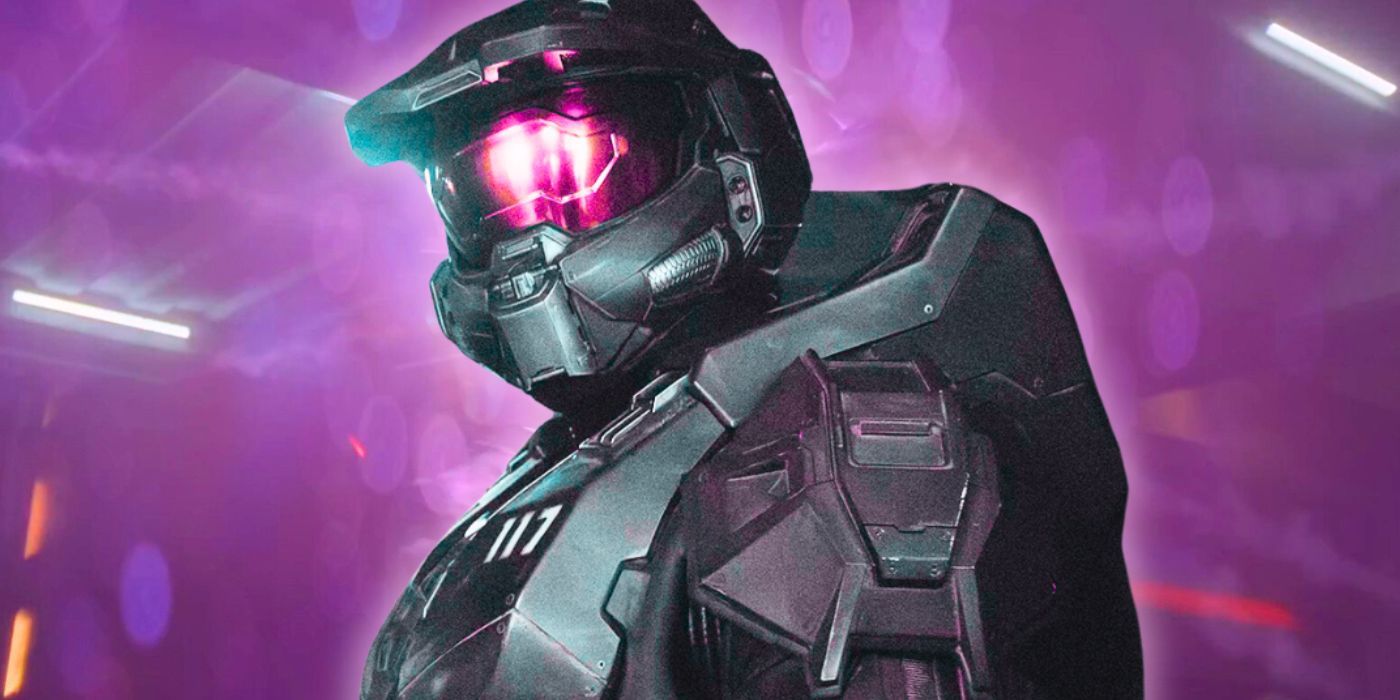
Related
How Halo Season 2’s Fall Of Reach Is Different From The Games & Books
Halo season 2, episode 4, “Reach” adapts the franchise’s iconic Fall of Reach plotline, but the Covenant invasion is different from that of the games.
7 The Halo Series Put A Human In The Covenant
Makee’s very existence is antithetical to Halo’s story
Speaking of Makee, her very existence as a character is completely at-odds with everything the video game series establishes about the Covenant. The Covenant are the primary villains of the Halo series, a cabal of alien races joined under the leadership of the Prophets, their weak but influential leader caste. The Covenant believe the Forerunners to be deific beings that used the Halo Array to ascend to divinity, in a bitter war against the humans attempting to prevent them from also activating the rings.
it makes no sense for the Covenant to have indoctrinated a human like Makee into being one of their own
The Covenant hate humans, viewing them as lesser beings, and even regarding the powerful Spartans as literal demons. Thus, it makes no sense for the Covenant to have indoctrinated a human like Makee into being one of their own. The show attempts to skirt around this idea with the concept of the Blessed Ones, with the Covenant needing Makee to activate Forerunner technology, but it’s clear this conceit was only made so Halo could save on budget with a human villain.
6 Master Chief Barely Has His Helmet On
The series completely eschewed one of Halo’s biggest rules
Though Master Chief isn’t a silent video game protagonist, he’s famous for always wearing his iconic MJOLNIR armor helmet. Other than a brief glimpse of his eyes in Halo 4, the game series never fully revealing Master Chief’s face is a core conceit of the franchise. Yet at the end of the first episode of Halo, John-117 took off his helmet in what was clearly framed as a big moment that ended up being completely unearned. For the rest of the series, Master Chief’s helmet is off his head more often than not.
Master Chief actor Pablo Schreiber has since defended the show’s choice to keep his face in the limelight, claiming that acting through a helmet doesn’t allow the audience to truly emotionally connect with a protagonist. But Pedro Pascal’s incredible helmeted performance in The Mandalorian proves this assertion flat-out wrong, especially within the boundaries of an epic space opera. From the moment Master Chief’s helmet left his head, the Halo series lost a lot of goodwill with fans.
5 Master Chief Acts Completely Out Of Character
Master Chief’s lack of a helmet isn’t the only thing wrong with Schreiber’s portrayal
As iconic as Master Chief’s helmet is, the show’s unwillingness to use it could be forgiven if John-117 was better characterized. In the games, Master Chief is stoic, cool-headed, and perhaps a little bit cocky, but is usually inclined to follow orders, taking the time to get a superior’s permission for his unorthodox battle strategies. He also has something of a dry sense of humor, using what few words he does carefully choose to leave a massive impression on fans of the franchise.
Paramount+ version fundamentally misappropriating Master Chief’s psyche
The John-117 of the series is nothing like this. Instead, Master Chief is irrational, vengeful, and volatile in the show, in many cases eschewing orders and commands. But worst of all, Master Chief’s relationship with Cortana is far different, with Chief being ambivalent or downright hostile to her for the majority of the series. This is in stark contrast to Chief’s genuine, if not outwardly stated, close relationship to Cortana in the games, the Paramount+ version fundamentally misappropriating Master Chief’s psyche.
4 Cortana’s Purpose And Origins Are Completely Different
Cortana’s new origin undermines her agency
Aside from Master Chief himself, Cortana is one of the most famous characters from the Halo games. This makes it all the more confusing that the Paramount+ show would alter her backstory so significantly, being one of the biggest lore discrepancies in the Halo series. In the games, Cortana is created by Dr. Halsey after going through hundreds of iterative clones, built for the purpose of aiding Halsey in her research. In the end, Cortana chooses to become Master Chief’s companion of her own volition.
In the show, Cortana was indeed created by Dr. Halsey, but her purpose is far different. Rather than choosing Master Chief, Cortana was purpose-built to help Spartans in the field, and was assigned to him through no choice of her own. This seemingly small change has a massive impact on Cortana’s character and the self-determination of AI in general in the Halo series, being more of a helpless puppet or tool rather than a character in her own right. Not only that, but Cortana was installed directly into Chief’s brain in the show, rather than his suit.
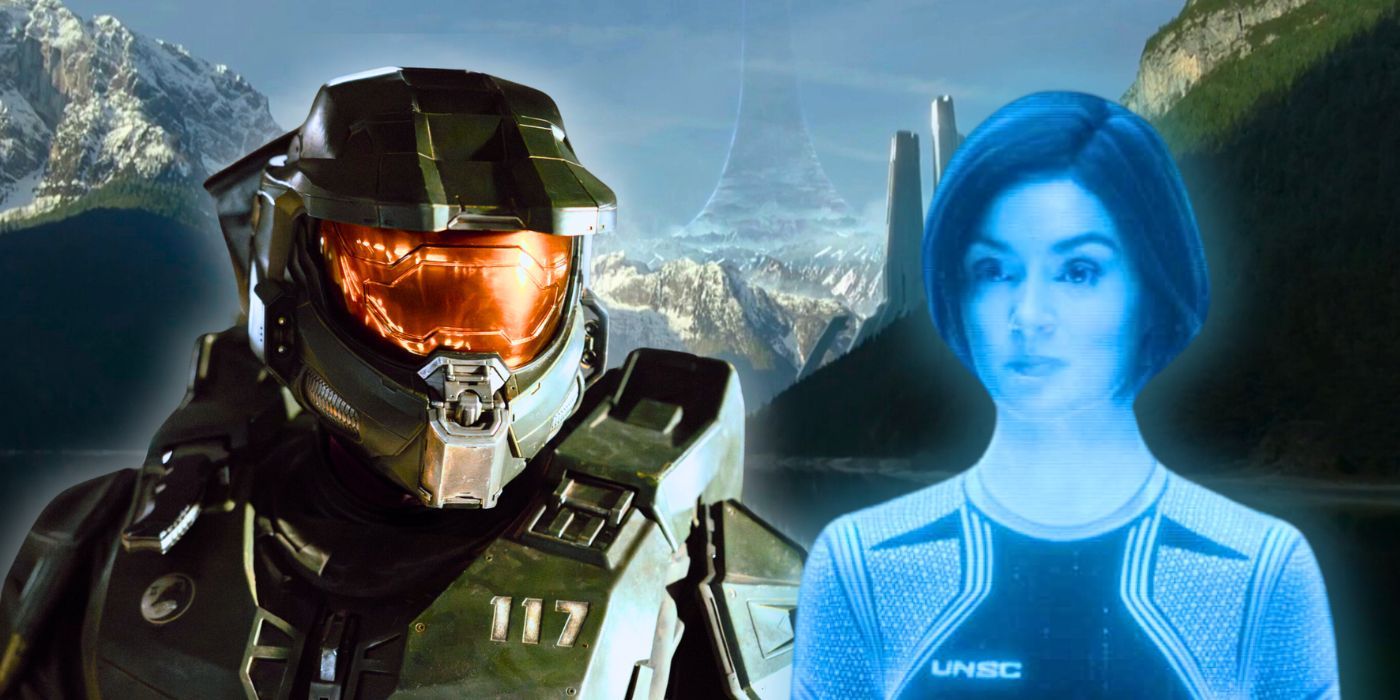
Related
The Double Meaning Of Cortana’s “It’s Alive” Explanation In Halo Season 2’s Finale
In the Halo season 2 finale, Master Chief and Cortana finally make it to the Halo ring, prompting the AI to make a rather compelling observation.
3 Halo Was Full Of Plot Holes And Nonsensical Moments
The Halo series even disappoints by its own measures
It’s admittedly unfair to constantly judge Halo by the story of the original games. The series has clearly stated numerous times that it wasn’t looking to replicate the lore of the games 1-to-1, and deserved to be assessed on its own merits. Yet even by its own standards, the Halo TV show was riddled with plot holes, nonsensical moments, and contradictions that likely contributed to the poor reception even among non-fans of the games.
Most egregiously, Master Chief having sex with Makee, a prisoner of war, implies an astounding lack of security on behalf of the UNSC
Many of these discrepancies come from the way characters act. Makee sided with the Covenant despite the fact that they razed her planet and killed everyone she knew. Miranda Halsey was able to sneak around and eavesdrop on a sensitive conversation concerning military operations easily, and was only given a stern warning when she was caught. Most egregiously, Master Chief having sex with Makee, a prisoner of war, implies an astounding lack of security on behalf of the UNSC.
2 Halo Was Missing Some Crucial Characters From The Games
Paramount+ missed out on some fan-favorite characters
To be fair to the show, Halo features several notable characters that already existed in the games beyond Master Chief and Cortana, including Captain Jacob Keyes and Dr. Halsey herself. Yet the series missed out on several fan-favorite characters that would’ve been wise to introduce at least by the second season. With more familiar faces on the horizon, Halo might’ve stood a chance at getting renewed for a third season.
By far the most egregious missing character is Sergeant Johnson, the wise-cracking, cigar-chomping human soldier that kept the dialogue of the Halo games fresh with his irreverent personality. The quick-witted ODST trooper Buck would’ve also been a sight for sore eyes, not to mention any of the Spartans from the team Noble Six in Halo: Reach considering when the Halo show takes place in the games’ timeline. It’s not just human characters that are missing either, as the show’s Arbiter isn’t Thel’Vadam of Halo 2 fame.
1 Halo Focused Far Too Much On Family Drama
The series overcorrected on Halo’s lack of interpersonal drama
As a first-person shooter video game franchise, it’s safe to say that interpersonal drama has never been at the front of Halo‘s story. While a certain level of human conflict is always implied to be broiling in the background, the series is, at heart, about humanity’s struggle to survive in the shadow of existential threats like the Covenant, the parasitic Flood, and the Halo Array itself. It’s understandable that a Halo TV series would need to manufacture a larger amount of interpersonal drama, but the familial angle was a strange route to go.
There’s no denying that
Halo
struggled to get renewed for a third season because of many blunders such as this.
The show focused a lot on Dr. Halsey and her relationship with her daughter, Miranda Keyes, frequently distracted from the interesting bigger-picture storytelling most fans were interested in. The ultimate effect turned out to be something like a soap opera, which brutally clashes with the overall tone of Halo as a franchise. There’s no denying that Halo struggled to get renewed for a third season because of many blunders such as this.
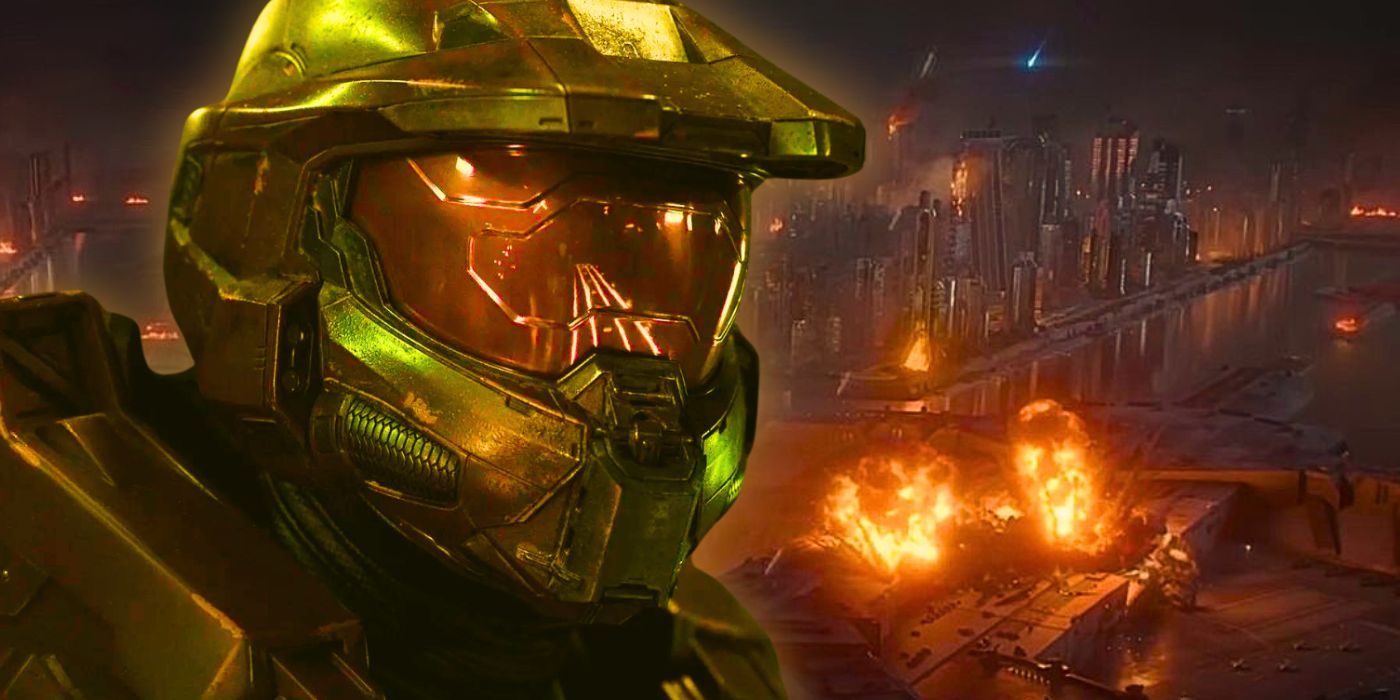
Related
13 Biggest Moments In Halo Season 2’s Fall Of Reach Episode
The biggest moments from Halo season 2, episode 4, “Reach,” which chronicles the Fall of Reach, will have a huge impact on the TV series’ future.



